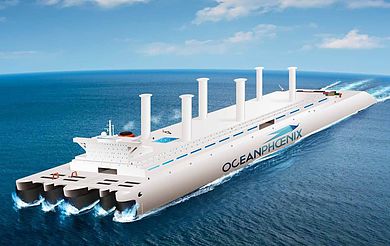
The world’s oceans are polluted and it is difficult to argue against the fact that that mankind has polluted them.
More than 8 million tons of plastic are dumped in our oceans every year. Out at sea vast islands of floating plastic waste cover square miles of ocean
The proliferation of plastic products in the last 70 years or so has been extraordinary; quite simply we cannot now live without them. We are now
Companies around the world are producing nearly 300 million tons of plastic every year, half of which is used just once and thrown away. Much of that ends up at sea and is driven by the ocean currents to become huge carpet like mats of waste.
The numbers are frightening. If just plastic bottles are considered, then look at these facts from the Container Recycling Institute. They say that 100.7 billion plastic beverage bottles were sold in the USA during 2014, the equivalent of 315 bottles per person. 57% of those units were plastic water bottles with 57.3 billion sold in 2014. This figure is up from 3.8 billion plastic water bottles sold in 1996, the earliest year for available data.
Recent studies indicate that the in the North Pacific alone there are areas of waste ranging in size from 1.4 to 3.4 million square kilometres.
Thankfully there is an organisation who now plan to do something about it.
They plan to construct and operate a huge factory-ship capable of eradicating the millions of tons of plastic waste that have accumulated in the North Pacific and other Oceans around the world.
The Ocean Phoenix Project based in Nice France hope to construct a ship 360m in length capable of retrieving, compressing, and packing the waste. Roughly the width of two supertankers side by side her beam will be 115 metres and her draught will vary from 16 m to 30 metres.
Their ship Ocean Phoenix 360 with its trimaran hull is based on the SWATH concept. Diesel-electric Hybrid engines powered by LNG will drive the ship at an operating speed of 12 knots.
Capable of filtering a layer of water up to 30 meters deep and 100 meters wide, the highly autonomous possessing of the waste will take place continually. Once packaged waste will be loaded onto an accompanying support ship that
will take it onshore for recycling leaving the recovery vessel free to continue its job of waste harvesting.
The ship will remain operational even in the most severe weather conditions, ensuring constant and optimal waste recovery.
She does not discriminate when it comes to waste. Shipping containers, multi-ton logs occasionally found where currents converge), plastic waste (and other forms of debris) and micro-plastics, practically the size of plankton are all treated the same way and are processed.
Treating a volume of 16,500 m³ per second, Ocean Phoenix has an output
2.8 times greater than the water flowing over Niagara Falls during its peak season. Using this comparison, the capabilities of Ocean Phoenix 360 become more readily perceivable.
The organisation plans for a fleet of 20 ships that could treat an area of roughly 3 million square kilometres in 10 years, or more with supplemental ships, depending on the total area of the waste layers.
